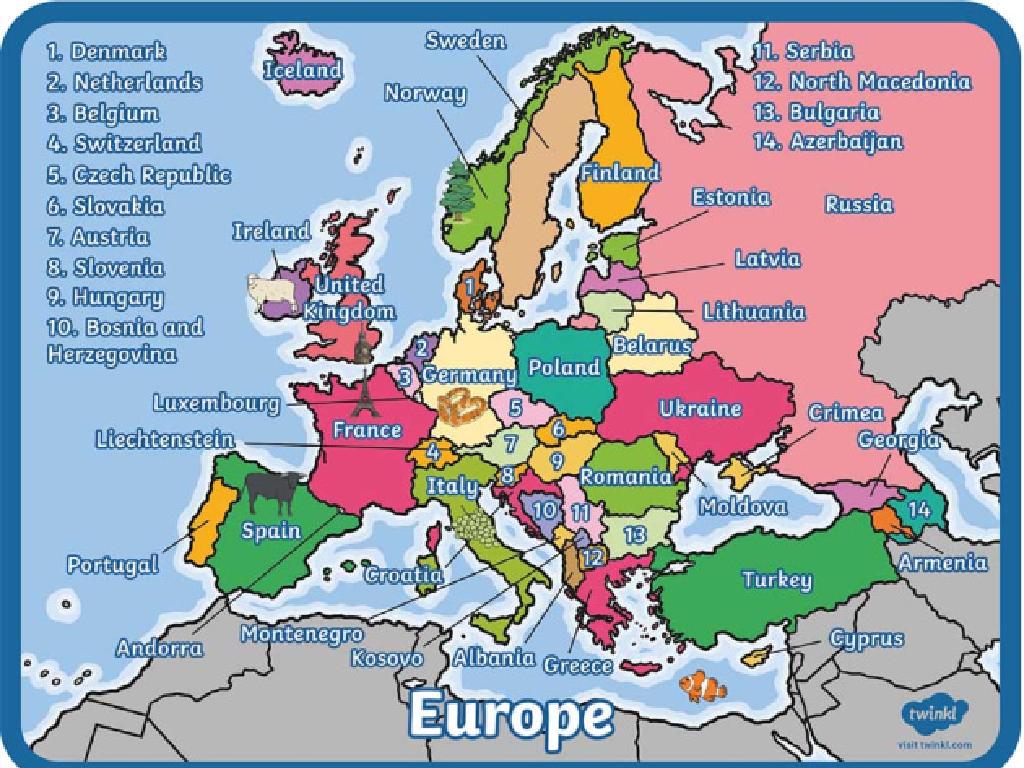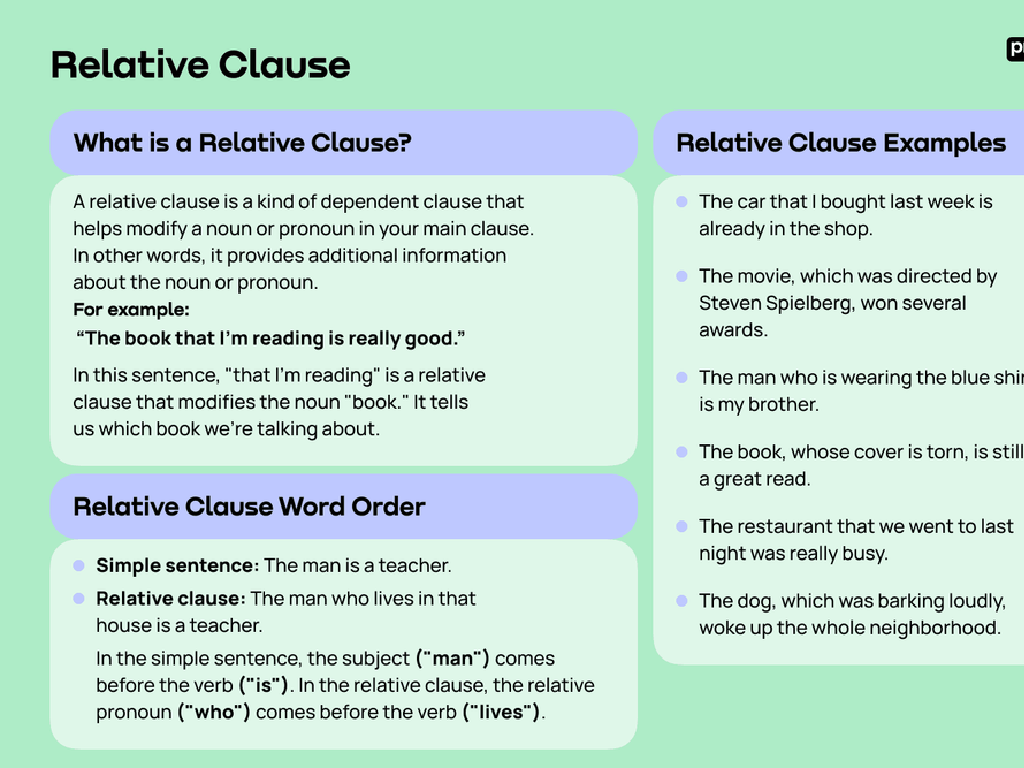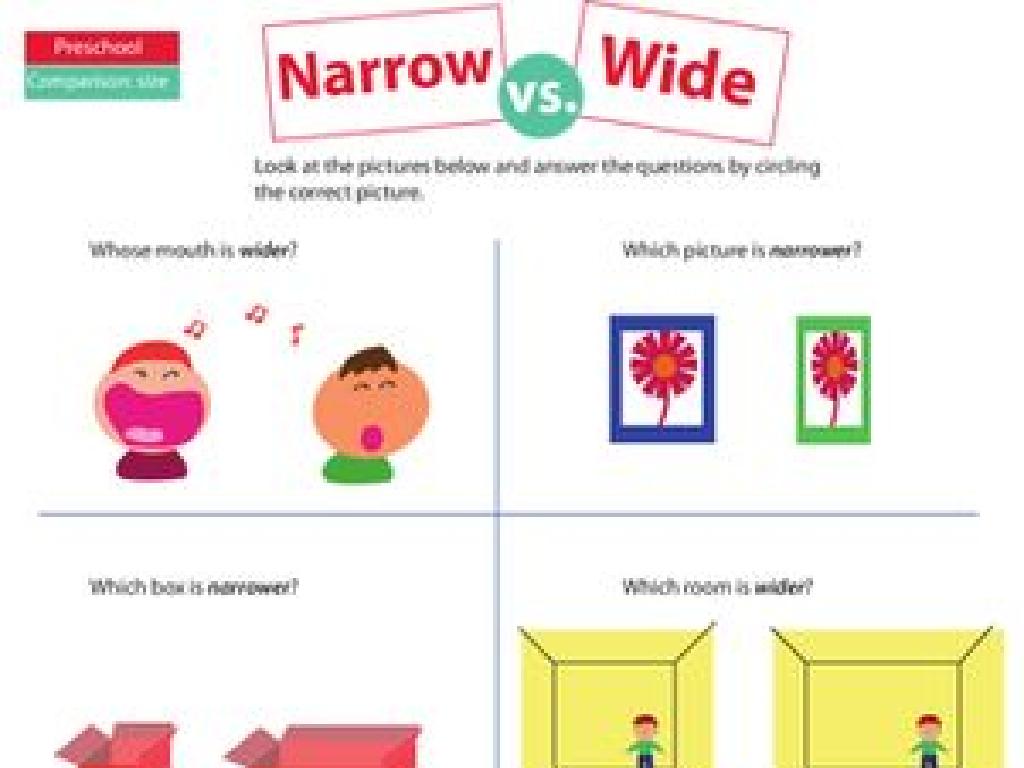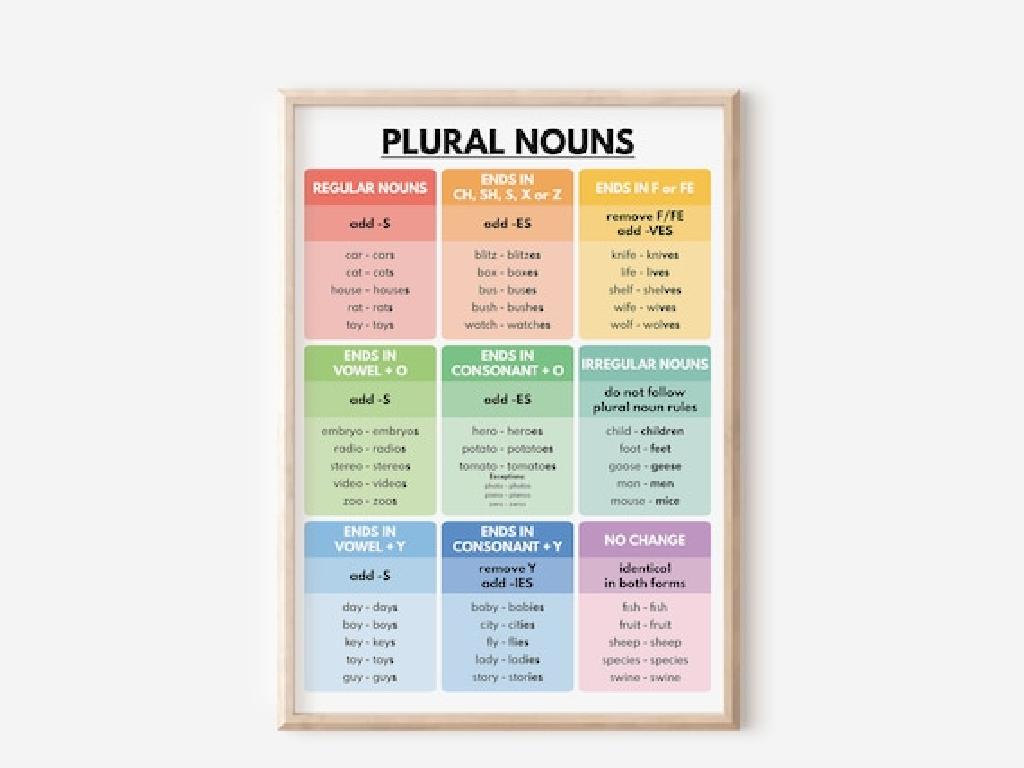Count To 20
Subject: Math
Grade: Kindergarten
Topic: Counting To 20
Please LOG IN to download the presentation. Access is available to registered users only.
View More Content
Welcome to Counting!
– Today’s focus: Learning numbers
– Counting practice: Up to 5
– Who can count to 5? Let’s try!
– Our big goal: Count to 20
– Let’s count together!
– We’ll count as a class from 1 to 20
|
This slide is designed to introduce Kindergarten students to the concept of counting. Start the lesson by engaging the students with the excitement of learning about numbers. Encourage participation by asking if anyone can count to 5, providing a comfortable starting point. The main objective is to guide the class to count together up to 20, fostering a collaborative and supportive learning environment. Use visual aids like number charts or objects to count, and consider incorporating songs or rhythmic clapping to make the counting more interactive and memorable. The activity should be paced according to the students’ response and understanding.
Counting Numbers 1 to 5
– Begin with numbers 1 to 5
– Count using apples or blocks
– Use real objects to visualize numbers
– Practice counting on fingers
– Each finger represents a number
– Understand numbers 1 to 5
– Recognize and say the numbers out loud
|
This slide introduces the very basics of counting for Kindergarten students. Start by focusing on numbers 1 to 5 to ensure that students are not overwhelmed and can easily grasp the concept of counting. Use tangible objects like apples or blocks to help them visualize each number, which also adds a tactile element to the learning process. Encourage students to use their fingers to count, as this is a relatable tool they always have with them. Make sure they can recognize the numbers and say them out loud, as this reinforces their learning. In the next class, be prepared to have different sets of objects for the students to count and practice with. This hands-on activity will help solidify their understanding of the numbers 1 to 5.
Counting Numbers 6 to 10
– Counting from 6 to 10
– Use toys for counting
– Each toy represents a number, like 6 teddy bears
– Counting with crayons
– Assign a crayon to each number, 6 green, 7 blue, etc.
– Practice together: 6-10
– Say the numbers aloud as a group
|
This slide is focused on teaching Kindergarten students to count from 6 to 10, a fundamental skill in early math education. Encourage the use of tangible objects like toys and crayons to represent each number, which helps in visualizing and understanding the concept of quantity. During the activity, guide the students to count the items together as a class, reinforcing the sequence of numbers. Make sure to repeat the counting exercise multiple times and praise the students for their efforts to build confidence. For the next class, consider preparing a simple counting song or a game to make the learning process even more engaging and enjoyable for the children.
Counting Numbers 11 to 15
– Learn numbers 11 to 15
– Count using stickers for each
– Place a sticker for 11, then 12, and so on
– Say it out loud: 11 to 15
– Repeat the numbers after the teacher
– Practice counting together
– We’ll count as a class, supporting each other
|
This slide is focused on teaching Kindergarten students to count from 11 to 15. The activity involves using stickers or stamps, which makes learning tactile and visually engaging. As you present each number, encourage the students to place a sticker on their counting sheet corresponding to the number. After introducing the numbers, lead the class in a responsive chant, where you say the number and the students repeat it. This reinforces auditory learning and memory. Finish the activity by counting together from 11 to 15 several times, ensuring that the students are comfortable with the sequence. Offer praise and gentle corrections as needed. For students who grasp the concept quickly, challenge them to count backwards from 15 to 11.
Counting Numbers 16 to 20
– Learn numbers 16 to 20
– Match numbers to dots
– Connect the number 16 to a group of 16 dots
– Count out loud together
– We’ll count as a class: 16, 17, 18, 19, 20!
– Practice makes perfect
– Keep practicing counting at home too
|
This slide focuses on teaching Kindergarten students the final set of numbers in the ‘Count to 20’ series. Start by introducing the numbers 16 to 20 with visual aids. Then, engage the students in a matching activity where they connect the written numbers to the corresponding number of dots. This helps solidify their understanding of quantity. Next, lead the class in counting out loud from 16 to 20 to practice pronunciation and reinforce number sequence. Encourage repetition and provide positive feedback to build confidence. As homework, suggest that students practice counting everyday items at home to further reinforce these concepts.
Counting Practice: Using a Number Line
– Practice counting on a number line
– A number line helps us see the numbers in order
– Point and count together: 1 to 20
– We’ll point to each number and say it out loud
– Count from 1 to 20 without stopping
– Let’s try to count all the way to 20 smoothly
|
This slide is designed to engage Kindergarten students in a counting activity using a number line as a visual aid. The number line will help them understand the sequence of numbers and the concept of counting in order. Encourage the students to point to each number on the number line as they count out loud, reinforcing their understanding of number order and recognition. The goal is to count from 1 to 20 without interruptions, promoting fluency in counting. For the activity, consider having students count in unison, then individually, and finally, in small groups to build confidence. Additional activities could include counting objects, clapping while counting, or using a song to make the activity more engaging.
Counting Game: Show Me Your Numbers!
– Let’s play a fun counting game
– Listen to the music carefully
– When the music stops, show a number
– Use your fingers to show any number from 1 to 20
– Find objects to match your number
– Look around and pick the same number of items, like 4 crayons or 3 blocks
|
This interactive game is designed to help Kindergarten students practice counting to 20 in a fun and engaging way. Start by playing some lively music and have the students dance or move around. When the music stops, they should quickly show a number between 1 and 20 using their fingers. Then, challenge them to find objects in the classroom that correspond to the number they’re showing. This activity not only reinforces number recognition and counting but also helps with fine motor skills and object counting. For the teacher: Be prepared with a playlist of short songs or tunes and be ready to pause the music at different intervals. Observe the students as they show their numbers and find objects, offering help and encouragement as needed. Have a discussion afterward about the different objects counted and praise their efforts.
Class Activity: Number Hunt
– Let’s explore and find numbers
– Match items to numbers 1-20
– Can you find 3 pencils or 5 blocks?
– Team up for counting fun
– Pair up with a buddy to count together
– Show and tell your number finds
– We’ll share what we found with everyone
|
This interactive activity is designed to help Kindergarten students practice counting to 20 in a fun and engaging way. By searching for items around the classroom, students will apply their counting skills in a real-world context. Encourage them to work in pairs to foster teamwork and communication. As they find items, they should match the quantity to the numbers from 1 to 20. After the hunt, each pair will have the opportunity to present their findings to the class, reinforcing their counting skills and building confidence. Possible variations of the activity could include finding items of a specific color, shape, or size to match the numbers, or even combining items to reach a total count, such as 2 erasers plus 3 crayons to make 5 items.
Counting to 20: Great Work!
– Excellent counting up to 20
– Practice makes perfect
– Let’s count to 20 together again
– We’ll count as a class to reinforce our learning
– Keep practicing at home!
– Try counting objects, steps, or toys!
|
This slide is meant to congratulate the students on their effort and progress in learning to count to 20. It’s important to remind them that mastery comes with practice. Encourage them to count along with you one more time to solidify their learning. After the final count, motivate them to continue practicing at home by counting everyday objects. This will help them apply their counting skills in real-life situations and enhance their understanding. As a teacher, provide positive feedback and celebrate their success in counting to 20.






